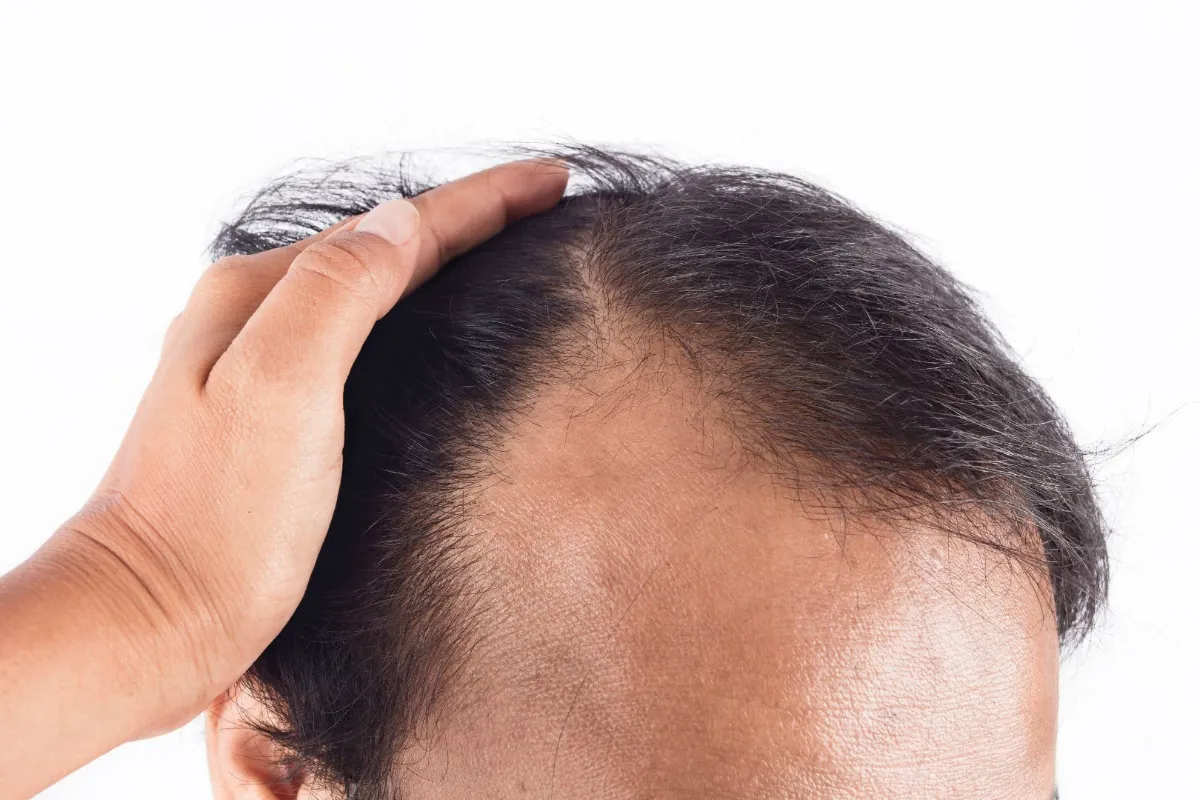Most of the time, bald spots can develop new hair. It can be necessary to try multiple therapy modalities in order to achieve the desired outcomes. When addressing this extremely typical worry, have patience and think through all of your alternatives.
People of both genders experience hair loss on a regular basis. However, a bald spot might still make you feel embarrassed and frustrated, and it can also make you less confident.
Hair loss can have many different causes, such as:
medical disorders that are inherited or connected to the body’s immune system, stress, certain hair care routines, and hormone levels
treatment for cancer and skin health
Treatments are frequently available to help strengthen hair growth where thinning has occurred or to help regrow hair on bald spots. However, it’s crucial to depend on tried-and-true therapeutic approaches and to be cautious of goods and therapies that make lofty claims without providing solid scientific evidence.
Simple home cures can occasionally yield positive results, but if they aren’t working for you, you may need to take prescription or over-the-counter (OTC) medications to regenerate hair.
Surgery or other medical treatments can be required if these methods prove ineffective. Learn more about the causes of bald spots, self-care methods, and when to seek medical attention by reading on.
How can a bald spot be treated medically?
Your doctor will attempt to identify any underlying conditions that might be contributing to your bald spot before suggesting a drug or procedure to address it. This could consist of a:examination of your past health records, including any current symptoms
physical examination with an emphasis on the type of hair loss you are experiencing
“pull test,” in which a few hairs are pulled to determine how many emerge and how simple it is to use blood testing to check for underlying issues
A scalp biopsy involves removing a small number of scalp cells or hairs for laboratory analysis in order to look for signs of an infection or other hair loss cause.Your doctor might suggest one or more of the popular prescription drugs for hair loss once they have determined what might be causing your bald area.
Finasteride
Finasteride (Propecia) is one of the most commonly given medications for hair growth. Everyone can use finasteride, although due to concerns, you shouldn’t use it when pregnant.Trusted Source can have flaws.
Anthralin
Alopecia areata can be treated topically with anthralin (Dritho-Scalp). It may aid in promoting hair growth when applied to bald areas. According to a recent study (Trusted Source), it worked well for kids.
Corticosteroids
Liquid corticosteroids with prescription strength can be administered straight to the scalp. This is frequently a successful treatment for kids with alopecia areata, a form of hair loss.
People with alopecia areata can restore hair growth in a matter of weeks by receiving corticosteroid injections into areas of their scalp where they have patchy hair loss.
Methotrexate
Your doctor could recommend this potent drug if previous therapies are unsuccessful.
Additionally, it is occasionally used with a corticosteroid. However, there are potentially serious adverse effects associated with methotrexate, so be sure to carefully follow your doctor’s instructions.
How to Grow Hair Again in a Bald Area
In many cases, bald spots can regrow hair. To acquire the desired outcomes, you might need to attempt more than one kind of treatment. As you tackle this extremely typical issue, use patience and go over all of your possibilities.
Hair loss is a common phenomenon for people of all genders. But a bald spot can still cause feelings of embarrassment and irritation while also damaging your self-confidence
air loss cHan have many different causes, such as:
- stress
- certain hair care practices
- medical conditions that are inherited or are related to the body’s immune system
- hormone levels
- skin health
- cancer treatment
Treatments are frequently available to help strengthen hair growth where thinning has occurred or to help regrow hair on bald spots. However, it’s crucial to depend on tried-and-true therapeutic approaches and to be cautious of goods and therapies that make lofty claims without providing solid scientific evidence.
Simple home cures can occasionally yield positive results, but if they aren’t working for you, you may need to take prescription or over-the-counter (OTC) medications to regenerate hair.
Surgery or other medical treatments can be required if these methods prove ineffective. Learn more about the causes of bald spots, self-care methods, and when to seek medical attention by reading on.
Which over-the-counter remedies are available for bald spots?
OTC products that promise to stop or even reverse hair loss are widely available. Some are more well-known and respected than others.
Here are a few reliable over-the-counter remedies for bald spots:
Minoxidil
Minoxidil (Rogaine and other generic medicines) is one of the most popular and effective therapies.
It comes in shampoo, foam, and liquid forms. Stronger forms of minoxidil are also available by prescription.
Minoxidil may cause side effects like skin irritation or unwanted hair growth on skin near the scalp. If minoxidil does restore hair growth, it must be used regularly or its effects will start to wear off.
Collagen-based products
Collagen, a protein found in the skin and elsewhere in the body, is also associated with hair growth and thickening hair that has started thinning due to androgenetic alopecia (male and female pattern hair loss).
Look for shampoos, conditioners, ointments, or serums that contain collagen. Try using them when you bathe or rub them
Supplemental vitamins
Hair growth is linked to specific vitamins and minerals, such as:
vitamin A, B vitamins, and biotin, the main component of many hair-growth products
Iron, zinc, vitamin C, vitamin D, and vitamin E
Any supplement that you take in large quantities could cause problems.
Before beginning any new supplements, talk to your doctor about your concerns because they are not tightly regulated by the FDA and might contain substances that are not specified on the label or higher concentrations of active ingredients.

